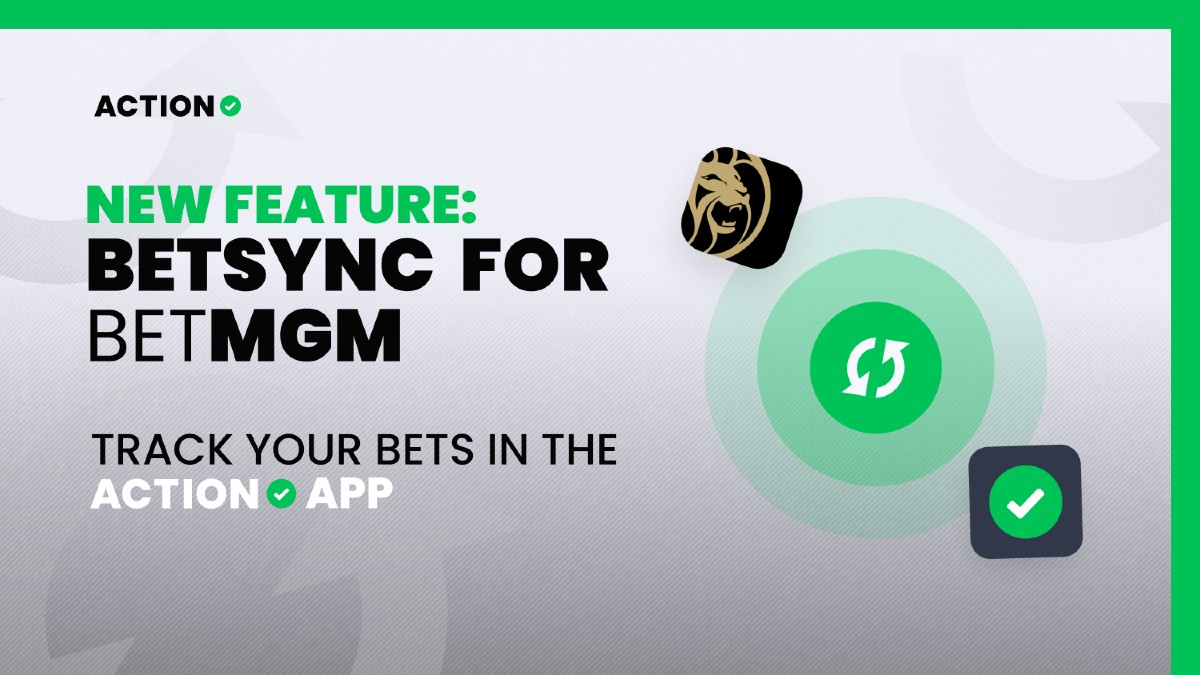Lacrosse is a sport that has been rapidly growing in popularity, but unlike many other sports, it’s featured very few betting options until now.
In the past two years, professional lacrosse leagues like the Premier Lacrosse League (PLL) and National Lacrosse League (NLL) have partnered with DraftKings and BetMGM, respectively, and other sportsbooks like bet365, Caesars and FanDuel have started to offer lacrosse lines as well. Now, fans of college lacrosse can even get involved with NCAA men’s lacrosse lines available for the first time to start a full season.
So, whether you're an experienced bettor looking to learn more about lacrosse or a lacrosse fan looking to learn more about betting, we’ve provided six tips to help you navigate the different variations of lacrosse and help you become a profitable lacrosse bettor.
Know the Differences Between Lacrosse Leagues
For those new to lacrosse, it may be surprising to know that there are two distinct variations of men’s lacrosse: field lacrosse (outdoor) and box lacrosse (indoor). Field lacrosse is played outside (often on football fields) with 11 players (including a goaltender) on the field for each team. Box lacrosse is played inside in arenas with six players (including a goaltender) on the floor for each team. Even the dimensions of the goal itself are different with field lacrosse using a 6′ (high) x 6′ (wide) cage and box lacrosse using a 4′ (high) x 4'9″ (wide) cage.
Furthermore, while professional field lacrosse and collegiate field lacrosse are the same sport at their core, there are some key differences between each, such as a shorter shot clock and game length, slightly smaller field dimensions and the addition of a two-point arc in professional field lacrosse.
Since betting is currently available on the National Lacrosse League (professional box league), Premier Lacrosse League (professional field league) and NCAA men’s field lacrosse, it is important to know the differences between each. While the flow of a lacrosse game is similar, it is important to only use data from the specific variation of lacrosse you plan to bet on.
Monitor Underdogs Against the Spread
Much like other college and professional variations of a sport, margins of victory in lacrosse games can be much greater than in professional games. As a result, college lacrosse point spreads more closely resemble basketball spreads, while professional lacrosse spreads are more similar to a puck line in the NHL. Since betting on college lacrosse is still very new, we’re going to focus on the point spread data currently available from the past two PLL seasons and current NLL season.
According to the Bet On Lacrosse Report, during the 2021 season there were 1.5-point spreads 34 times and 2.5-point spreads eight times. During that span, 1.5-point underdogs are 23-11, covering at a 67.65% rate. As for 2.5-point underdogs, they’re 6-2, covering at a whopping 75% rate.
Want even more proof that underdogs can be profitable in lacrosse? Underdogs are 22-20 straight up during this 42-game sample size. So if you bet an underdog on the moneyline, your bet would hit at a rate of 52.38%. (Not to mention, you’d be getting plus money when betting underdogs on the moneyline.)
While favorites have done well straight-up in the NLL (winning at a 62.32% rate during the 2021-22 season,) the professional box lacrosse league has seen a similar against the spread trend. During the 2021-22 NLL season, underdogs against the spread covered at a 55.07% rate. More specifically, 1.5-point underdogs covered at a 54.46% rate and 2.5-point underdogs covered at a 57.69% rate according to the Bet On Lacrosse Report.
Now, we’re not suggesting that you blindly play underdogs against the spread. As with any trend, there is always nuance involved. However, until sportsbooks get better at handicapping professional lacrosse games, it may be wise to consider taking teams that are getting the points on the spread if you think they already possess an edge in their matchup.
Use Pace of Play when Betting Totals
Despite the differences between the three variations, totals the past two years have generally hovered around 23 goals per game. However, this generalization ignores the various differences in pacing between the three different versions of the sport. A 60-minute NCAA lacrosse game moves at a slower pace than a 60-minute NLL game or 48-minute PLL game, mostly due to the professional leagues’ shorter shot clocks and shorter field dimensions.
Since there are fewer possessions in college lacrosse due to a longer shot clock and larger field, pacing tends to have more of an impact on college lacrosse totals than in the NLL or PLL and can be a great predictor for whether a total is likely to go over or under the amount set by sportsbooks.
Take the 2021 matchup between Denver and Utah for instance. According to Lacrosse Reference, Denver ranked 65th out of 69 Division I teams in 2021 — a fact not too surprising for lacrosse fans who know that the Bill Tierney-led squad tends to play at a slower pace than the NCAA average. On average, it took Denver 48.54 seconds to get its first shot off after gaining possession. Compare that to Robert Morris, which averaged the fastest pace at 36.33 seconds before taking its first shot in an 80-second shot clock.
Denver faced another slower paced team in Utah, which ranked 39th in pace in 2021. The result was a 9-8 game that saw 78 total possessions, resulting in a total of 17 goals.
On the flip side, fans saw Virginia and Syracuse combine for 30 total goals in their first meeting in 2021. Last year, Virginia ranked 15th in pace while Syracuse finished at 29th. Their matchup on February 27, 2021 saw the teams combine for a total of 92 possessions.
While offensive efficiency also plays a large part in the total score, looking at both teams’ pace of play along with their offense efficiency can be much more useful than looking at goals per game and can help predict whether a game is likely to go over or under the total set by oddsmakers.
Look for Offensive Efficiency Paired with Possession Advantages
Another aspect of lacrosse that makes it unique is the ability for teams to acquire a disproportionate amount of possessions. While possessions don’t necessarily translate to goals, a team can gain a sizable advantage through extra possessions when paired with an efficient offense.
Unlike basketball, possessions don’t alternate after a team scores. Instead, play resumes with a faceoff at the middle of the field, similar to hockey. Unlike hockey however, it is easy for teams to gain a substantial edge at the faceoff, with some of the best faceoff specialists regularly finishing a season above 65%.
This is most noticeable in NCAA men’s lacrosse and to some extent the PLL, where dominant faceoff specialists can significantly impact the outcome of a game. Yet, as important as a possession advantage is, it is still not directly correlated with team success if not paired with an efficient offense.
For example, the most efficient offense in the PLL in 2021 was the Archers, but their faceoff percentage was tied for second-to-last with a 44% team faceoff percentage. Likewise, the 2020 Waterdogs finished with the third-highest faceoff percentage at 56%, but ranked last in offensive efficiency. Neither team advanced past the first round of the postseason.
A team that did combine a successful faceoff percentage (70%) and efficient offense (first in the league) was the 2020 Whipsnakes. Not only did they go undefeated and win the 2020 PLL Championship, they also finished with a +31 score differential.
Bottom line, a high faceoff percentage alone is not a great indicator of overall team success, but when paired with an efficient offense that is matched up against an inefficient defense, it can create a favorable mismatch that bettors can exploit.
As for the NLL, while faceoff specialists are becoming more prevalent in box lacrosse, the greater number of possessions in the NLL greatly reduce a top faceoff specialist’s impact and is currently not an indicator of success when it comes to the final score, even when paired with an efficient offense. Thus, bettors should avoid using faceoff percentage when handicapping NLL games for the time being.
Monitor Injuries and News to Gain an Edge
Just like any sport, monitoring injuries and other news is an important part of betting on lacrosse. However, unlike other sports where line movement usually occurs rather quickly after injuries are made public or other news is released, lacrosse lines rarely move, even when big named players are ruled inactive. This is why it is often better to wait until closer to game time to place a bet on lacrosse since closing line value tends to be minimal or in most cases not applicable.
While this will eventually change as the sport becomes more popular and more money is wagered on lacrosse, it provides an opportunity for lacrosse bettors to gain an edge. More information can lead to a more informed decision when betting.
Like any sport, though, the impact of injuries should be weighed differently based on the player who is injured and even the variation of the sport. While a team losing its leading scorer is a cause for concern in any variation of lacrosse, a starter going down in a professional lacrosse game tends to have less of an impact than a star collegiate player being added to the inactive list. Likewise, a team that loses a key starter in the NLL — where gameplay is six-on-six — may experience a greater impact than a team in the PLL, where gameplay is 11-on-11.
Ultimately, injuries and other news should be weighed on a case-to-case basis, and if properly considered can give bettors an edge over the sportsbooks. Even if injury news doesn’t ultimately affect the handicap of a game, it could still impact a bettor’s decision to either place a bet or pass on a game entirely.
Track Your Bets
One of the best things you can do to become a profitable lacrosse bettor is to track your bets — everything from a point spread to moneyline to a prop bet — in The Action Network App. Our app tells you what your ROI is for every wager type and you can begin to recognize your patterns to determine your strengths/weaknesses.
You can even utilize The Action Network app’s BetSync feature when placing bets through BetMGM. Once you connect your BetMGM account to the app, every bet you place on BetMGM will automatically populate in the app, making it even easier to track your lacrosse bets. After tracking your bets in our app, you’ll know where to put your energy going forward when placing wagers.
























































